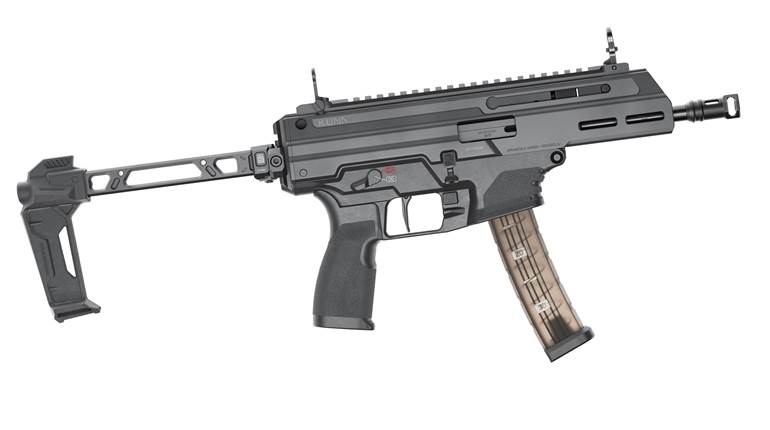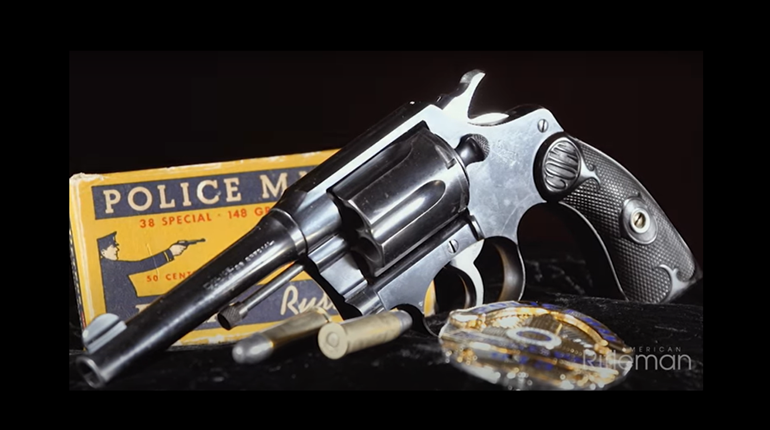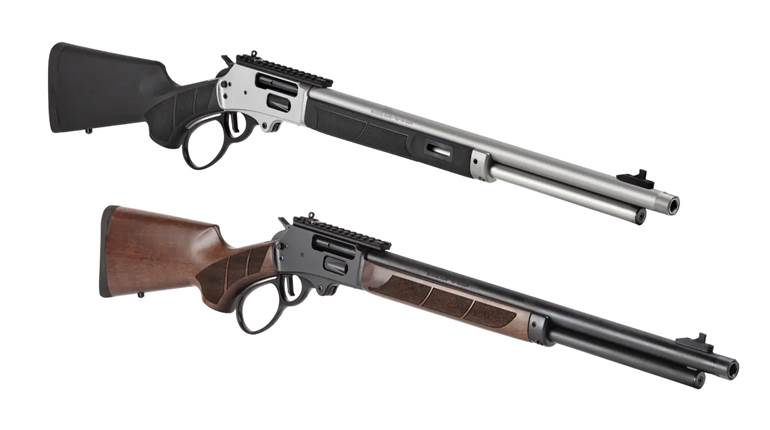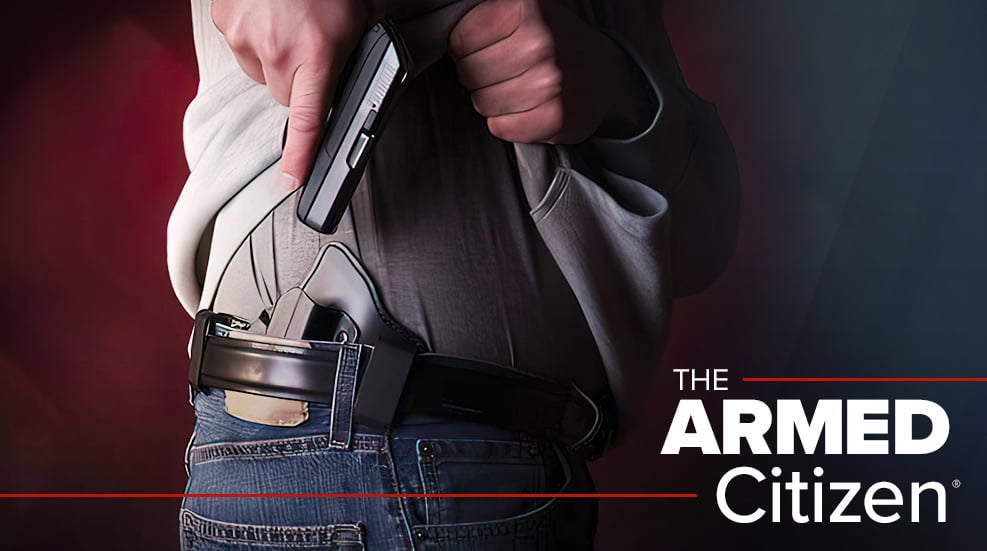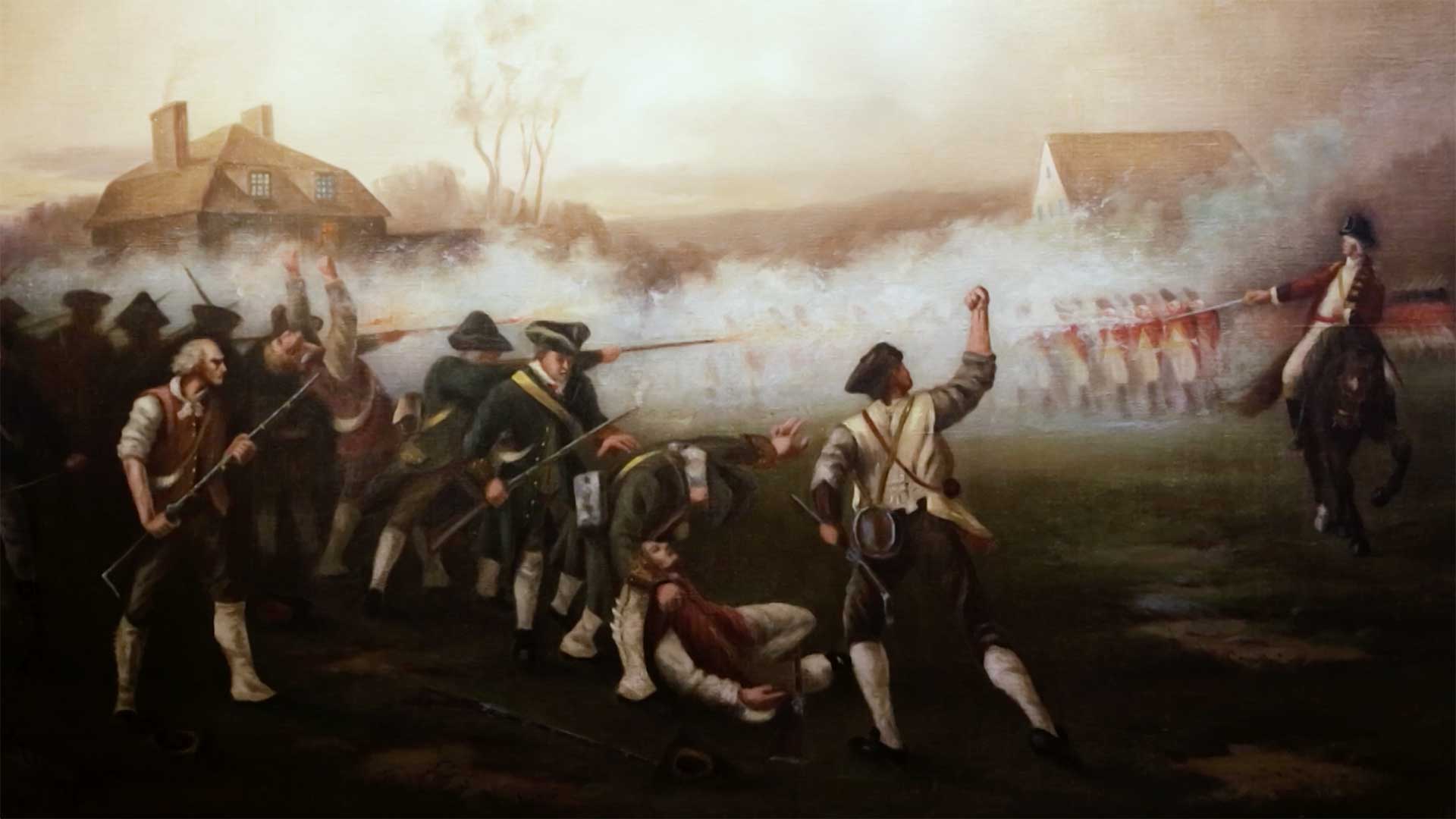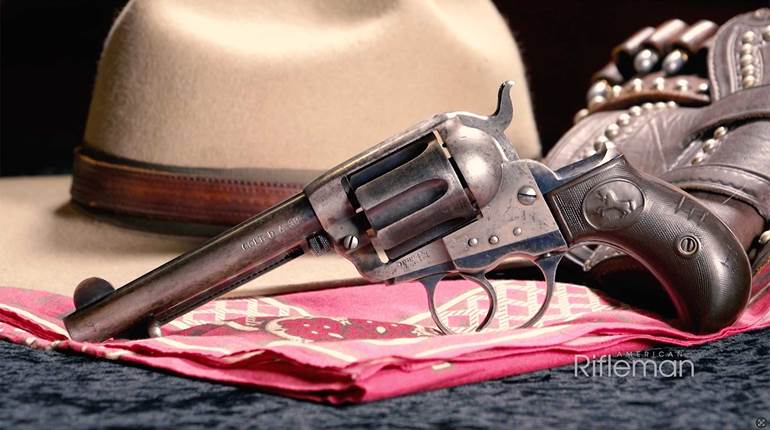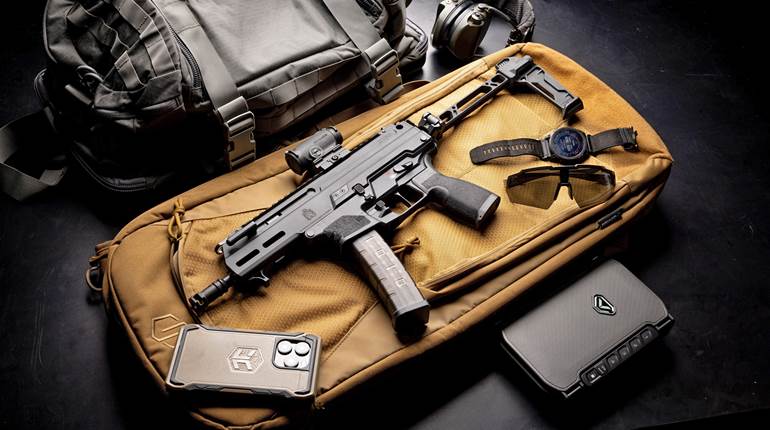Welcome to another American Rifleman Gun Of The Week video, and this time, we’re on the range with a compact defensive carbine from Smith & Wesson. The FPC, or Folding Pistol-Caliber Carbine, is a 9mm Luger-chambered, semi-automatic rifle that conveniently folds up for easy transport and storage, all while offering a host of upgraded features. Watch the video above for on-the-range use with Smith & Wesson's M&P FPC.

While we’ve seen folding pistol-caliber carbines before, notably from KelTec with its SUB2000, the Smith & Wesson FPC has a few unique features going for it. At its core, the design is inspired by the company’s M&P M2.0 handgun lineup, and the grip frame and magazines are all borrowed from this pistol family, so if you’re a fan of Smith’s M&P handguns, or really, any modern polymer-frame, semi-automatic handgun, then this carbine is a natural extension.

The folding mechanism on the FPC enables the barrel and fore-end to fold along the right side of the receiver and stock, ensuring that any mounted optic doesn’t prevent the collapsing and deployment of the gun. To preserve zero, the Picatinny optics rail is located on the front folding portion of the FPC, and because of that, long- or infinite-eye-relief optics, like red-dots, find a good home on this defensive carbine. This optics rail is just one part of a complete handguard that offers M-Lok accessory attachment slots at the 3-, 6- and 9-o’clock points all along its length. A short section of barrel protrudes from the muzzle end of the handguard, and the 16.25” barrel is threaded for suppressor use.

At the rear portion of the FPC, there’s a unique buttstock that provides space for two 23-round spare magazines. The stock is mounted onto the rear receiver tube, which contains the recoil spring, as well as an integrated buffer that dampens some of the felt recoil from the heavy bolt. As a blowback-operated rifle, the FPC requires more mass in the bolt, but the recoil buffer slows travel before the bolt bottoms out in the tube, ensuring that there’s no abrupt, jarring recoil impulse after firing a shot.

For controls, much of the lower portion of the FPC shares common features with the Smith & Wesson M&P series of handguns. A built-in blade within the trigger shoe acts as a safety, and there’s a reversible, single-sided, push-button magazine release that allows mags to drop from the bottom of the grip frame. A single-sided slide-stop lever is located on the left side of the frame in the traditional position for right-handed shooters. Cartridges are ejected from the right side of the action, and just forward of the ejection port is the lever used to unlock the forward portion of the FPC for folding. To charge the carbine, a charging handle is located to the rear of the grip frame, on the underside of the receiver tube.
Before heading to the range, we appreciated the compact, stowable nature of the FPC, which collapsed down to a length of just over 16”. Smith & Wesson includes a great, nondescript case with the gun, too, which made it easy to transport. Shooting the FPC was easy and a lot of fun, thanks to our familiarity with the M&P platform and the gun’s softened recoil impulse. For pistol-caliber carbine fans, as well as owners of the company’s M&P handguns, the FPC is a great choice for defensive use.
Smith & Wesson M&P FPC Specifications
Action Type: blowback-operated, semi-automatic, centerfire rifle
Chambering: 9 mm Luger
Barrel: 16.1” 4140 steel, black Armornite finish
Receiver: aluminum
Stock: glass-filled nylon
Magazine: 17-round detachable box
Trigger: 5-lb., 10-oz. pull
Sights: none; Picatinny rail
Weight: 5 lbs., 4 ozs.
MSRP: $699

